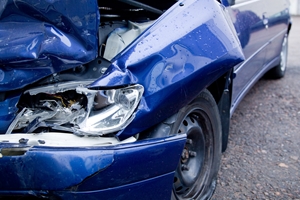 New and emerging car technology is both exciting and scary at the same time. As we depend more on vehicles to protect us in the event of an accident, we also release further control and become more removed from the driving experience.
New and emerging car technology is both exciting and scary at the same time. As we depend more on vehicles to protect us in the event of an accident, we also release further control and become more removed from the driving experience.
Although driverless vehicles are some way off, safety technology is a growing presence in nearly all new vehicles and something that most of us take for granted.
However, there is one organisation that doesn’t take safety technology lightly – the Australasian New Car Assessment Program (ANCAP). Over 20 years, the crash test authority has investigated the quality of safety technology in more than 400 vehicles – awarding the five-star safety ratings to the top performers.
To meet the rapid pace of safety technology, authorities such as ANCAP must always be looking to raise the bar and give consumers accurate information.
As such, from January 2015, ANCAP will be lifting its entire star rating system and will work closer with its European counterpart Euro NCAP.
What does this mean?
Each year since 2011 ANCAP has tightened its safety standards and 2015 will be no different. However, now ANCAP will align its tests, protocols and calculation methods with Euro NCAP.
ANCAP has already been using crash test data from Euro NCAP for the past 15 years because information is not always available in Australia.
“Improvements in vehicle safety design and development in the past few years have been swift and substantial – particularly in the realm of advanced safety assist collision avoidance technologies – and test programs the world over are adjusting their plans to match pace,” ANCAP Chief Executive Officer, Nicholas Clarke explained.
What safety technology will see greater focus?
With safety technology rapidly advancing, ANCAP believes that Australia has fallen behind somewhat in relation to road safety.
For example, technology such as self-braking systems and stability control are becoming common yet there is no local standard for the systems.
ANCAP chair Lauchlan McIntosh told Fairfax Media that by aligning our policies with European standards and results, Australian consumers will receive better information.
“All NCAPs around the world are assessing crash avoidance, we’ll be assessing the same protocols in Europe,” he said.
“The technology varies from manufacturer to manufacturer and from market to market – it’s not easy to determine.”
Mr McIntosh explained that it was important Australian drivers get the same standard of vehicle that other motorists around the world receive.
ANCAP will begin testing a range of safety technology following the Euro NCAP standards. This is in relation to lane support systems (LSS), speed assistance systems (SAS) and electronic stability control (ESC) as well as autonomous braking. It is expected that by 2018, ANCAP’s testing conditions and policies will be exactly the same as their European counterparts.
Are there are differences between the two?
ANCAP has come under much criticism in recent months with its differences to European standards.
Earlier this year, Renault Australia head Justin Hocevar questioned the need for ANCAP after the test crash authority slammed vehicles without curtain airbags. This after the Renault Clio received five stars from Euro NCAP and four from ANCAP, despite performing the same in the crash tests.
Euro NCAP will reward a vehicle solely based on its crash test performance regardless of where or if airbags are located. However, ANCAP will give a vehicle four stars or less if it doesn’t feature side or curtain airbags, even if the car performs perfectly in the crash test.
your opinion matters: